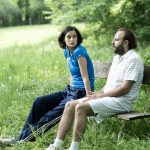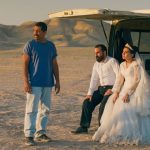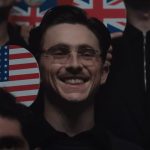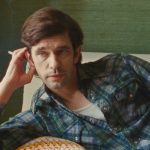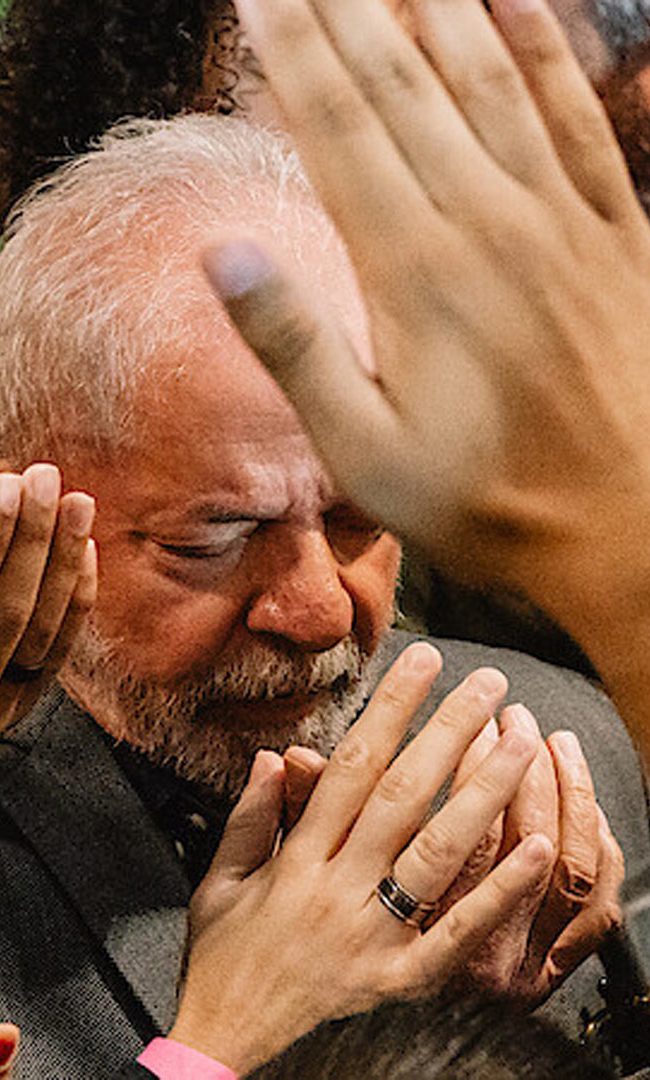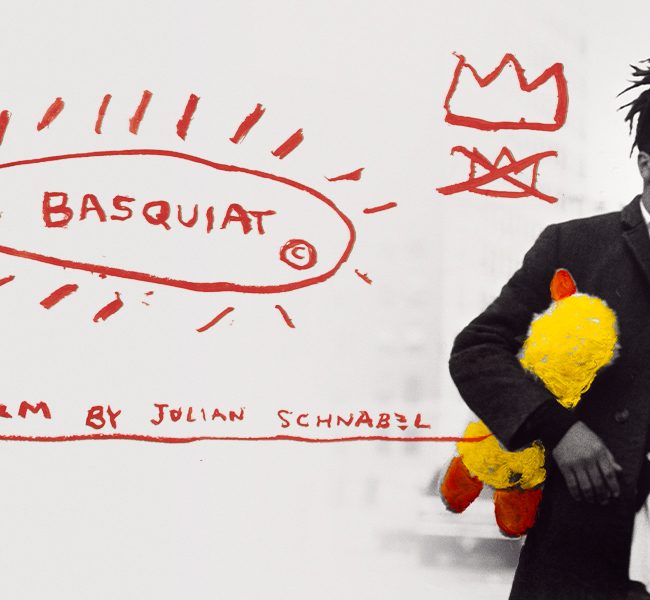A Conversation with Rex Miller (HARLEY FLANAGAN: WIRED FOR CHAOS)

Rex Miller’s Harley Flanagan: Wired for Chaos, which premiered at last year’s DOC NYC, centers on the titular frontman of the NYC hardcore band Cro-Mags, who began his punk rock career at the unlikely (very unhealthy) age of 11, beating drums for the Stimulators (founder and guitarist Denise Mercedes is Flanagan’s aunt). Indeed, to say that Flanagan grew up too fast is a vast understatement. Not so much raised as allowed to run wild on the gritty Lower East Side of the 70s and 80s – the pioneering musician’s free-spirited “Warhol Factory “it” girl” mom believed children were better off sans parental guidance – Flanagan was surrounded by sex, drugs and rock and roll pretty much from infancy; and also by a who’s who of downtown artists, musicians and writers. (His mother’s close friends included Allen Ginsberg and Lucy Sante – who appears throughout the doc.)
It’s a heck of a life, made all the more palpable by Miller’s deft use of archival footage from the era, along with more recent interviews with the bassist-vocalist’s eclectic array of notable friends and fans – everyone from Flea, to Ice-T, to Michael Imperioli and the late Anthony Bourdain. Surprisingly, Flanagan, now in his late 50s, still performs – and still practices the Brazilian Jiu-jitsu for which he earned a black belt. He’s also the happily married father of two sons – perhaps the forged-by-fire survivor’s most remarkable accomplishment of all.
The week of the film’s streaming debut Hammer to Nail caught up with Miller, who’s also a veteran DP and producer, to learn all about capturing such a tumultuous life – and making sense of the chaos.
Hammer to Nail: How did you first meet Harley – and why make a film about him specifically?
Rex Miller: I met Harley and his wife/partner/BFF Laura Lee (Flanagan) through friends. A friend of mine was dating one of his Ju-jitsu training partners. I was looking for my next project and he said, “You might want to meet Harley…” When people talk about “Harley” it’s always just the first name: HARLEY. Like Prince or Ringo.
I met Harley and Laura Lee for dinner and we just all kinda vibed. I had not heard of him and didn’t know his music, although my teenage years were also spent in NYC, often downtown and going to punk shows (and many others). My entry point, honestly, was Marcia Resnick’s incredible photo (which I saw on a Google search as I was about to meet him for the first time) – Harley with Andy Warhol and Joe Strummer when he’s, like, 12 years old. As a photographer I was just shaking my head, as there had to be some fascinating story that this photo was a window into.
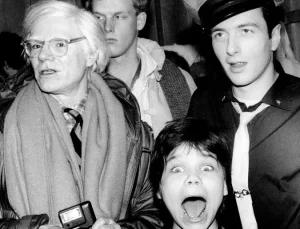
Marcia Resnick’s photo of young Flanagan
Harley explained where and when the photo was taken: 1978, backstage at The Clash show at The Palladium, the very first time the band played in NYC. A big alarm went off. Harley was backstage with the band and Warhol (and he actually hung out with the band for, like, two whole days); but I was also at that show—out in the audience, 10th row center, with three of my high school buddies.
So, this world of punk and the Lower East Side in the late 70s – more so than hardcore because I was away at college by the time that genre sprouted – is very much a part of my past. (That said, I only mingled in the scene as a fan, a big fan. I didn’t leave home and go live in squats on the LES.) Harley says in the film, “When my mom bought me the Sex Pistols album, it was a game changer.” Although my mom didn’t buy that record for me, it had a similar effect. So, our first meeting yielded a whole slew of points of connection.
After dinner Laura Lee and Harley then kidnapped me back to their place, where we stayed up really really late talking. By the time I left it was basically, “Not sure where this is going, but it’s going somewhere.”
HtN: In addition to being a director (and cinematographer, photographer and producer), you were the late Nancy Buirski’s longtime DP, including on 2023’s Desperate Souls, Dark City and the Legend of Midnight Cowboy. Though you’ve also worked with everyone from Sam Pollard (your co-director on Citizen Ashe) to Nanfu Wang (In the Same Breath). So what draws you to certain projects? Is it the subject matter (you seem to have a particular interest in sports and music)? The filmmaking talent? Both?
RM: Nancy Buirski is one of my favorite people – ever. We met in Durham, where we each had landed after our respective “escapes from New York.” We both came from backgrounds in documentary photography. She had this amazing pedigree, having worked at the NY Times and at Magnum, the prestigious photo agency. So, we had a common language.
Nancy was incredible. She made her first film, The Loving Story, when she was in her mid 60s, and of course it won a Peabody and an Emmy. She hired me as DP and it was a great experience. Nancy was very hands on, and we just clicked. I wound up shooting five films for her. She had multiple projects in the pipeline when she passed, suddenly, totally out of the blue.
On the second project, The Rape of Recy Taylor, we were shooting down in Abbeville, Alabama. She sent me out on my own one day – she had to stay at the hotel and do producer stuff – to shoot a bunch of imagery. When I asked her what she was specifically looking for, she gave me my marching orders: “Oh, you know what I like.” And that was it. She basically let me know she trusted me – and that was big. So we went on to do that project and three more, and every single one was just an amazing and positive collaboration. I like to think we had a distinctive style going.
As for what draws me to a subject, when it’s me directing, I’d say it’s always different. It’s just a feeling – a feeling that this subject, this person, is interesting to me. I really like the research part of doc filmmaking, so if, as you are diving into a subject, going deeper and deeper, it’s still interesting then you know you’ve got something. You can then go take this really deep dive into the film. (Harley Flanagan: Wired for Chaos, Citizen Ashe, and Althea each took five years to make. This is not a small commitment of time and resources, to say the least, so you’d better be passionate about it!)
When shooting for other directors (which is something I love doing), it’s all about making their vision come true, not really my vision. I like being part of a team, and putting my passion into getting the goods – for them. Also, being only the DP frees me up a bit, as opposed to producing, directing and shooting.
HtN: Did Harley supply much of the archival footage and introduce you to potential interviewees? How did you decide what and who to include?
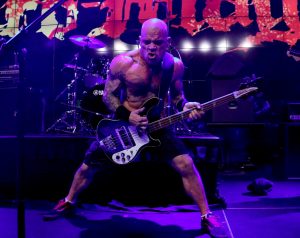
Harley Flanagan onstage
RM: Harley had kept — and Laura Lee had organized — a whole lot of archival material, photographs, articles, even ephemera (posters, etc.). But our amazing archival producer Natalie Shmuel was also constantly on the lookout, and was incredibly tenacious and on point when it came to actually licensing everything. We had over 600 archival assets that we used in the film. That’s a major undertaking of paperwork, not to mention licensing fees, to get all of that done legally to the point where you can actually release a film. I also had a blast buying photo books from all these great photographers who were documenting the punk/hardcore music scene during the glory days of CBGB and Max’s (Kansas City) – capturing the insanity of the LES and Alphabet City back in the chaotic days of the 70s and 80s.
Telling a historical narrative — well, and cinematically – also requires a little luck, and we had our share. There’s an incredible clip of Harley, age 13, and his bandmates from the Stimulators, playing on the roof of the BBC in Belfast in 1980. That only came about because I happened to be on the phone with someone from the BBC about a completely different project, and this woman had an interesting accent. It turned out she was from Belfast. When I mentioned I was working on a film and looking for some material she interjected, a bit sarcastically and dismissively, “Oh, you’re looking for footage on the Troubles.” I replied, “No, actually there’s this guy Harley Flanagan and his band played at the first Belfast punk/new Wave Festival in Belfast…” Well, she perked right up and said, “My mom was married to and lived with the guy who started and ran that festival. We know Harley.”
She then proceeded to email me the clip — which is priceless, in my opinion. Harley didn’t even know the clip existed! We never would have found it if not for that simple interaction. And I’ve had other moments of magic like that. Basically, you just have to tell everyone you meet what you’re working on because you never know where the “archival magic “ is going to appear.
I’ll add that the first (very rough) cut of the film was at least four hours. Our brilliant lead editor (and producer) Elisabeth Haviland James worked on the film for much of the last two years. I like to call her “the grown up in the room.” There was so much material—50-plus interviews, so many hours of performance footage. For me it’s a constant process of whittling down, and eventually figuring out what the film is going to be. As Elisabeth says, “You could make 20 films about Harley, all different, and they’d all be pretty interesting.” When someone has had a life like Harley’s it’s a mixed blessing. There is an abundance of material.
Just the rock and roll insanity, the violence, the backstage stories, his childhood in abandoned buildings, the famous people, his relationships, his kids, etc. We really honed in on Harley’s personal journey, hopefully his inner journey, as what we wanted to highlight. One thing the film is definitely not is a history of the Cro-Mags. There is a whole film to be made about that. Another rabbit hole we went down is the history of skinheads – which could be a doc series! And we spent considerable time researching that and talking to a couple of experts (professors and authors).
I really need to emphasize that I didn’t make this film by myself. Our initial editors Mikkel Elbech, Josh Granger, Sandrine Isambert all sweated heavily to craft this tale; and our composer David Majzlin was also heroic in crafting the score, collaborating closely with Harley, and spending days in the studio. I think Elisabeth and David did an amazing job in terms of getting the right mix of (extremely heavy) Cro-Mags music and the overarching score, which are two very different elements.
Also, Laura Lee Flanagan was extremely involved in the production of the film. It wouldn’t have even gotten off the ground without her. Often when it comes to docs about an individual, a family member gets a producer credit – as a bone, a perk, so to speak. But Laura Lee really was a producer, involved in many aspects of the filmmaking process. For instance, I did not know a single one of the interviewees – and we shot over 50. That happened through a combination of Harley making suggestions and Laura Lee actually getting them into the studio – a whole bunch of logistics. A documentary comes about as the result of putting out hundreds of fires — maybe thousands — and Laura Lee was the chief fire quencher! (Did I mention it’s not easy to make a film?)
HtN: One of the most heart-wrenching aspects of Harley’s story is his neglected childhood, raised – or rather not raised – in an environment in which he knew about sex and drugs before he learned the alphabet, as he admits in the film. This revelation was personally hard for me to stomach since, full disclosure, I actually knew – and have fond memories of – his mom Rosebud. That said, I met Rose (and her longtime partner Kirt) in the early aughts, decades after her “Warhol Factory “it” girl” days. Which made me curious to know if you ever thought about delving into what seemed to be Harley’s eventual reconciliation with his “adult” mom before her death.
RM: Yeah, I love the stories about both of his parents – both tragic, both fascinating, both very revealing. His mom Rosebud had a whole intriguing life of her own. She was a talented but unrecognized and unappreciated writer. There were some stories she wrote – while mixing in the Warhol/downtown scene – that are poignant and fascinating. But again, one only has 90 minutes to tell this story.
Our editor Elisabeth was so great at keeping things on track, because I love to explore everything, so many wonderful rabbit holes to go down in a film like this. But, as Lucy Sante said, one must learn how to kill your darlings if one is to find the through line. So, we had tough choices. One of my favorite scenes is not even in the film. Fortunately, we have a Blu-ray coming out later in the year that actually has seven extra scenes, so we are looking forward to that.
HtN: Could you talk a bit about your promotional campaign? I know the film played NYC’s Roxy Cinema after the festival run, and streamed for a week beginning August 8th, though I also wondered how you’re utilizing the hardcore music scene to spread the word.
RM: We were fortunate to have two great festival premieres—at DOC NYC and then at Slamdance. Both were great experiences, and I’d say that both contributed to us eventually having a distribution deal with Lightyear Entertainment. They’ve been absolutely amazing partners – with a whole team that’s been enthusiastically making it happen. (Easier said than done.)
The film has now screened in 20 cities, is having the digital streaming this week, and will go to Europe in the fall. Then the release of the Blu-ray, and on and on. It is definitely not an easy thing to get a film out into the world, and it’s definitely not my strong point – I’m better at making them. Laura Lee and Harley have gone all in on the promotion, and Harley’s done a lot of press and social media – all while touring internationally with his band Cro-Mags (and he’s even recording).
I’ll add that a filmmaker doesn’t always get complete buy in from a film’s subject – especially if they are no longer living! – so it’s been a great ride with them along and so committed.
– Lauren Wissot

